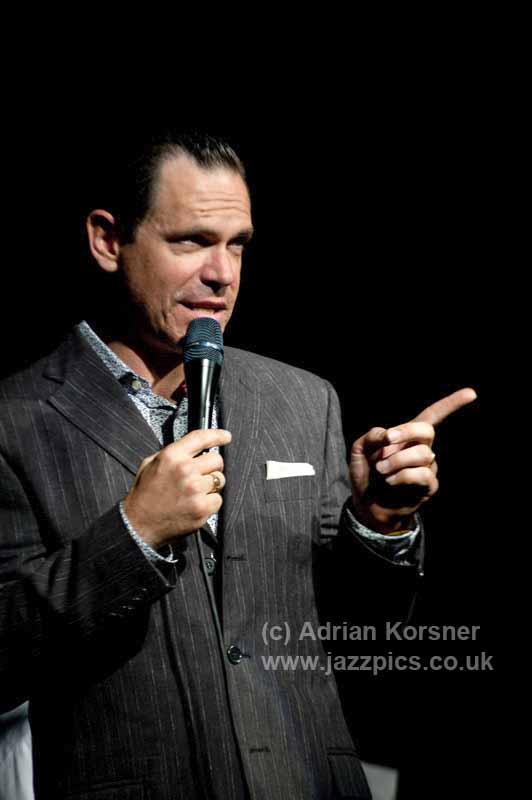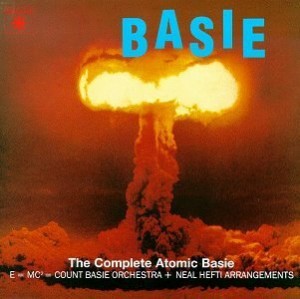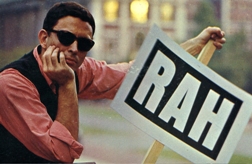
Kurt Elling -- the best male jazz vocalist ever
Last week I had the distinct pleasure of taking my favorite singer in the world, Kurt Elling, to my favorite spot in the world, the underground tunnel that runs along the western wall of the Temple Mount in the Old City of Jerusalem, and talking music with him all along the way. The day is described in exhaustive detail in the article “Going Up to Jerusalem with Kurt Elling“. For our SoTW, I’d like to try to pin down just why I think Kurt is the finest male jazz singer ever. Well, who’s competing for the title? Kurt (b. 1967) and I discussed the leading lights in the field, and by general consensus the outstanding male jazz vocalist, at least since Louis Armstrong, is Mark Murphy (b. 1932). Here’s how Kurt describes Mark: Mark recreated songbook classics and hipped up bop through his phrasing, arranging and unique vocal ingenuity. Mark shows us all that the singers’ art is never done evolving. He showed how moving and dramatic an evening of Jazz singing could be. I also became aware of Kerouac and the whole Beat/Jazz connection through Mark. He has made a lifetime of innovative, truly great vocal Jazz records.
Actually, the bond goes much further than that. Kurt has fashioned himself as Mark’s disciple/successor. Mark Murphy indeed created a corpus of ‘unique vocal ingenuity’. Mark indeed hipped up bop, and invested standards with a new level of vocal virtuosity and élan and impeccable taste. Kurt starts out where Mark left off. Kurt has used his entire inheritance of the beat aesthetic and jazz wisdom raise the pot to a whole new level. The metaphor “Nanos gigantium humeris insidentes” (dwarfs standing on the shoulders of giants) is attributed to Bernard of Chartres (d. circa 1124), referring to people of modest abilities advancing intellectual pursuits beyond what their notables predecessors achieved. Kurt Elling is a great artist standing on the shoulders of a very good one. Let’s look at an example, a song performed by both of them. I wish I could have found something upbeat, flashier, but the half dozen I came up with are all slow standards.  “Li’l Darlin'” was written and arranged by Neil Hefti for the 1957 Count Basie album “The Atomic Mr. Basie” (along with a number of other knockout numbers, truly a great album).
In 1958 Jon Hendricks added lyrics and recorded it with Lambert, Hendricks & Ross with Basie (and Joe Williams): Mark Murphy recorded it on “Rah!” in 1961:
“Li’l Darlin'” was written and arranged by Neil Hefti for the 1957 Count Basie album “The Atomic Mr. Basie” (along with a number of other knockout numbers, truly a great album).
In 1958 Jon Hendricks added lyrics and recorded it with Lambert, Hendricks & Ross with Basie (and Joe Williams): Mark Murphy recorded it on “Rah!” in 1961:  Kurt Elling recorded it on “Flirting with Twilight” in 2001: I don’t want to go too far off on a tangent, but if we’re already here, I can’t resist. Lambert, Hendricks & Ross’s rendition was groundbreaking.
Kurt Elling recorded it on “Flirting with Twilight” in 2001: I don’t want to go too far off on a tangent, but if we’re already here, I can’t resist. Lambert, Hendricks & Ross’s rendition was groundbreaking.
But I can’t help holding the opinion that their rendition’s reputation rests on its innovativeness. In 1984, five young Swedes were studying voice at the Swedish Royal College of Music. They were great fans of Bobby McFerrin, Count Basie, and LH&R. The college agreed to let them major in forging an a cappella quintet, which became The Real Group, and is still recording very fine music today as well as serving as an inspiration and guiding light for the entire international a cappella jazz scene. In their early years, they recorded a number of Basie numbers, taking LH&R’s approach to whole new levels of vocal refinement. Here’s their sterling treatment of “Li’l Darlin'”.
Murphy takes the song at about the same slow, swinging tempo as Basie, with a similar fabric of horns and tinkling piano (Wynton Kelly)–more harp on Basie’s original, more brushes from Jimmy Cobb’s drums on Murphy’s. The brass on the latter pretty much follows that of the original, thereby overlaying Murphy’s vocal. To tell you the truth, not a very original or interesting chart (by Ernie Wilkins). What can I tell you about the vocal? I love the song, and I think Mark Murphy presents it respectably. Nowhere does he venture far from Hefti’s proscribed melody. A classic hip 1950s groove, man. I can’t help thinking of Playboy After Dark and smoking jackets. My heart and ears warm to it as to a snifter of fine brandy.
.

Kurt takes the song at an ex-qui-site-ly slow pace. He holds the last note of each phrase for a full eight beats, two full measures—without struggling for breath at either end, without even a hint of strain. He breathes on weekends. A gravity-defying Michael Jordan of the chops. Listen to the leap up into his upper register at 2:50 – so sweet and gentle, so joyous and exultant, not a trace of gratuitous shvitzing of his incredible vocal abilities, but rather employing them honestly to express his very sincere love for his homely girlfriend. That’s the point of all this, isn’t it? The artist employs his craft to express his personal vision. Kurt is honest, reserved and modest, thoughtful and passionate. That’s an aesthetic that appeals to me most strongly. He is apparently very much in love with his wife. And it’s all right there in the song. “What’s new is you.” The arrangement is deceptively simple. Compare the swing, the syncopations, the straying from the rhythmic path here to MM’s version, even to Basie’s. For example, listen to “I’m not impressed with glamorous sights” at 3:30 in the Basie version. We’re towards the end of the song, where the most playful deviations traditionally take place. There’s a little stop-and-go of the rhythm, but the overall feel is the continued gliding through the song. The MM version doesn’t even go that far, it’s just a pretty predictable little bump. The KE version drags it right past its logical extreme, past all those clichés that Neil Hefti invented for Count Basie. It actually does swing.
Beyond musicianship, the texture of their voices? It’s so hard to be objective here, to posit objectively that Johnny Hartmann has a ‘nicer’ voice than Joe Cocker, for example. Mark Murphy has a steady, well-controlled workmanlike tenor. Kurt Elling has a warm, resonant, pliant baritone with an endless range. He is a balladeer with the very best of them. I think that when he rolls up his sleeves and deals with a straightforward ballad – well, there’s nary another male singer on the block I really enjoy listening to on straight standards. I find him unfailingly engaged, making the experience a live one every time. Kurt keeps all the balls in the air, los huevos included.  At the other end of the adventure spectrum from the standards, where the man in the air is flying with no net, is vocalese: “The writing and performing of a lyric which has been tailored to fit the lines of an instrumental solo from someone else’s record,” in Kurt’s own words. Murphy excelled at it, “Jon Hendricks perfected it.” I’m sorry, Kurt, with all due respect, I disagree with you. I think you surpass them both, by quantum leaps. Here’s one of Mark Murphy’s most famous vocaleses, “Stolen Moments”. No one is gainsaying the fact that this is very fine music. For reference, here’s the iconic Oliver Nelson original. But then check this out, Kurt Elling’s treatment of Freddie Hubbard’s “Delphia”. Kurt calls it “Freddie’s Yen for Jen.” It has been described as “a stellar jazz experience that comes pretty damn close to committing the pure emotion of love to tape.” I find myself in violent agreement with that. This is the pinnacle of vocal jazz.
At the other end of the adventure spectrum from the standards, where the man in the air is flying with no net, is vocalese: “The writing and performing of a lyric which has been tailored to fit the lines of an instrumental solo from someone else’s record,” in Kurt’s own words. Murphy excelled at it, “Jon Hendricks perfected it.” I’m sorry, Kurt, with all due respect, I disagree with you. I think you surpass them both, by quantum leaps. Here’s one of Mark Murphy’s most famous vocaleses, “Stolen Moments”. No one is gainsaying the fact that this is very fine music. For reference, here’s the iconic Oliver Nelson original. But then check this out, Kurt Elling’s treatment of Freddie Hubbard’s “Delphia”. Kurt calls it “Freddie’s Yen for Jen.” It has been described as “a stellar jazz experience that comes pretty damn close to committing the pure emotion of love to tape.” I find myself in violent agreement with that. This is the pinnacle of vocal jazz.
Don’t need no palace paved with gold
Don’t need more cash than banks can hold
When I get to feelin’ a feelin’
For something there ain’t too much of
My sweet li’l darlin’ gives me her love
Don’t catch me chasin’ round at night
I’m not impressed by glamorous sights
Li’l darlin’ may not be as pretty
As some other gals you can see But my li’l darlin’ only loves me
SoTW is a non-commercial, non-profit venture, intended solely to promote the appreciation of good music. Readers are strongly encouraged to purchase the music discussed here at sites such as iTunes or Amazon. Likewise, the photographs used are intended for non-commercial purposes only.









1 Response
[…] pop hits, “My Foolish Heart“, was covered by 2009 Indy Jazz Fest performer, Kurt Elling, who also won the 2009 Grammy for Best Jazz Vocal album, Dedicated to You. Tweet This entry was […]